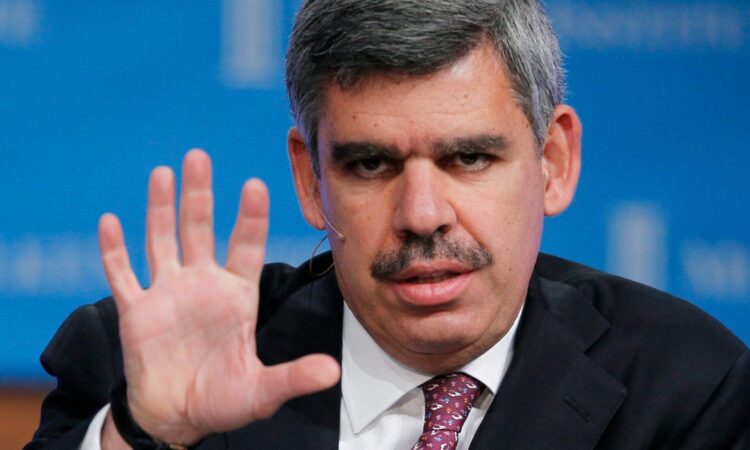
- Mohamed El-Erian named three key risks that will determine where US growth is headed in 2024 through 2025.
- That includes changes to the Fed’s inflation target and low-income consumer spending.
- Investors will also watch for a balance between technological innovation and geopolitical tension.
If Wall Street was wrong about recession odds in 2023 and 2024, forecasting for next year won’t be any easier, Cambridge economist Mohamed El-Erian wrote in Project Syndicate.
In his view, chances of a US soft-landing scenario still remain strong for the near-term, but there are three key risks that will determine how likely this really is.
First, all eyes are on the Federal Reserve as to whether it will double down in its 2% inflation chase, or if it can live with a slightly higher rate.
According to El-Erian, the central bank’s fixation on this figure could trap it between a rock and a hard place, in the case that US growth starts slowing before the target is reached.
In fact, the first quarter is already showing signs of this, with the latest GDP reading declining markedly against hotter-than-expected inflation. That has led to “stagflationary” alarm on Wall Street, a situation the Fed could only combat by hiking interest rates higher.
Since last year, El-Erian has warned 2024’s inflation would get stuck between the 3%-4% mark, and called on the Fed to readjust its target a percentage higher; otherwise, the central bank risks crushing the economy to achieve its goal, he’s said before.
Second, America’s growth trajectory will also depend on consumer spending, but especially among lower-income households. Though US consumption has generally stayed strong, lower-income brackets have taken the brunt of a declining environment. The cohort is increasingly strained by higher debt and eroded savings.
“Given high interest rates and some creditors’ loss of enthusiasm, this cohort’s willingness to consume will hinge on whether the labor market remains tight,” El-Erian wrote.
Third, US growth is at the mercy of where the broader narrative goes — which could either mean an innovative boost or a international rupture:
“While technological advances promise a new favorable supply shock that could unlock higher growth and drive down inflation, geopolitical developments could do the opposite, as well as limit the scope for macroeconomic policy,” he said.
For instance, while technology such as generative AI and sustainable energy could mean transformative growth for at least a few years, international strife could spark stagflationary instability — such as in the case that crude surges over $100 a barrel, El-Erian wrote.






